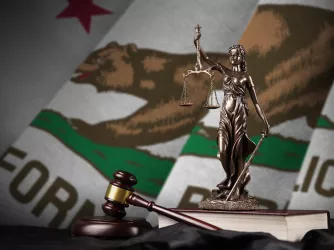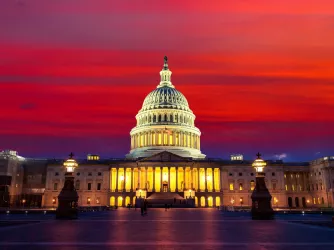Table of Contents
Sacred images, sacred rights
The intellectual evolution of mankind best proceeds when conditioned upon the fundamental belief that there must be a marketplace of ideas, open to all forms of thought ranging from the agreeable to the offensive to the far-fetched. It is upon this premise that the First Amendment was so deftly scribed in the 18th century, and it is upon this premise that much of the maturation of the world has come to include similar declarations of a right to free speech checked only by decidedly minimal restrictions.
It is in this vein that we look upon a dozen controversial Danish cartoons, with an eye toward the cornerstones of a frank and free exchange of ideas, no matter how insulting or controversial such notions may be. We firmly believe the infamous plans for a Nazi parade in the Jewish village of Skokie, Ill., were thoroughly anti-Semitic, emotionally destructive and yet of the very caliber of speech that must be allowed for the so-called marketplace of ideas to flourish. We have similar views of those cartoons that have now surfaced throughout Europe and the Middle East.
Religion is so often that topic to which the most devastatingly hurtful of speech can be attached and yet it is a core rhetorical realm that any civilized society ought to protect. While this board is led to question whether The Badger Herald would have made the same decision had these cartoons originally been submitted here in lieu of to the Danish publication, such is not the matter we face today.
We are saddened that the University of Illinois student newspaper, in republishing the controversial cartoons, has come under fire on many fronts, including an admonishment from the school’s own chancellor. Other student newspapers have taken similar actions and been met by similar — and even harsher — reactions. When a parcel of dialogue causes portions of the world to respond not with superior ideas but, rather, violence, it would seem the most civil corners of the world ought to be fully informed regarding just what this parcel of dialogue is.
While the Danish cartoons in question are undoubtedly offensive, regrettable distortions of a predominately peaceful religion and illustrations that run against the teachings of Islam, they are also now the impetus of riots that have caused numerous deaths, reduced symbols of global peace to charred ruins and brought attention to a clearly unstable region of the globe.
As a result, the cartoons in question are clearly newsworthy and it is our firm belief that the media ought not be a gatekeeper guided by prude censorship, but rather a vehicle of facilitation in the grand marketplace of ideas. While one may aptly question the newspapers that originally ran these cartoons, it would seem that the illustrations have now become more than depictions of an unsavory nature and commenced to stand also for the very necessity of free speech.
People have a right to see these drawings and make their own impressions as to whether they are per se offensive (which we maintain them to be), sufficient grounds for bloody riots (which we firmly believe them not to be) or the sort of speech that is so frightening in nature a society cannot function if it is allowed (which we firmly believe them not to be).
As such, we feel the American readership — and, more precisely, that of Madison, Wis. — is sufficiently mature to handle these images. While they may be offensive, they are also newsworthy and the key to helping many form intelligent opinions about the international riots and ever-increasing destabilization of a volatile region of the world. It is in this spirit that the student newspapers have elected to share these images with their readers, and it is in this spirit that we make the same decision.
Printed below is one of the 12 cartoons in question — the image that many have deemed to be the most offensive. In sharing this, we seek not to offend members of the Islamic faith or insult those who see the image’s argument to be comprised of a fallacy. Rather, we print this as a symbol of our continued dedication to free speech and as a means of better informing the debate that has been sparked.
No form of speech, regardless of how vulgar or hurtful, should be grounds for a violent reaction, and a legitimate example of journalism should not warrant a chancellor lashing out against a school newspaper. We stand in solidarity with all media outlets that have elected to share the full story with their readers by printing these images, and we cannot justify proceeding in a manner so prude as to not offer you the same full spectrum of thought.
It is the duty of the press to inform, not censor, and when free speech is under fire that responsibility is only heightened.
Recent Articles
FIRE’s award-winning Newsdesk covers the free speech news you need to stay informed.

O holy fight: New Hampshire Satanic Temple statue threatened by more than vandals

One day after FIRE lawsuit, Congress passes changes to filming permits in national parks

VICTORY: FIRE lawsuit leads California to halt law penalizing reporters, advocates, and victims who discuss publicly known information about sealed arrest records
